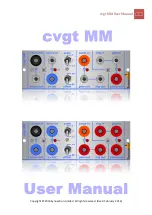
14
Style
[FADE IN]
Starting the Style with Fade In produces a smooth beginning, with the
volume increasing from low to high. Press the[FADE] button when Style
playback is stopped. The [FADE] LED will light up. When the Fade In is
complete, the [FADE] LED will go out.
[FADE OUT]
Stopping the Style with Fade Out produces a smooth ending, with the
volume tapering from high to low. Press the [FADE] button during Style
playback. The [FADE] LED will light up. When the Fade Out is complete,
the Style will automatically stop and the LED will go out. The keyboard
volume will also become lower if you are playing.
Chord Mode
Chord Basics
This section is a brief introduction to the basics of chords.
Chord Construction
1.
When three or more notes are played together, they form a chord.
A chord is the basic component of harmony, and each note in the
chord is generally built according to a principle of thirds.
2.
In most music, the fundamental chord is the “triad.” The notes that
make up a chord are determined according to their position: the
lowest note is called the “root”, the one a third interval above the
root is called the “third”, and the one a fifth interval above the root is
called the “fifth”.
3.
The root note, also known as the tonic, is the most important note in
a chord. It stabilizes the sound by determining the“mode” of the
chord, fixing the composition of the other notes in the chord. The
name of the chord structure depends on the interval of each note
above the root note in the chord.
• When the root pitch is a perfect fifth away from the fifth note and a
major or minor third from the third note, they are called “major chords”
and “minor chords”.
• When the root pitch is a major third and an augmented fifth or a minor
triad and a diminished fifth from the third note and fifth note, they are
called the “augmented chord” and “diminished chord”.
According to the principle of third superposition, we can add a seventh
(seven intervals from the root note) and ninth(nine intervals from the root
note) on the triad to form a “seventh chord”, “ninth chord”, “eleventh
chord” and “thirteenth chord”.
Please refer to a chord chart or use a chord reference for more informa-
tion on chord types.
Major Triad
Minor Triad
Augmented Triad
Diminished Triad
Fifth
Root
Third
Summary of Contents for AK603
Page 1: ......
Page 60: ...AK603_OM12EN...















































